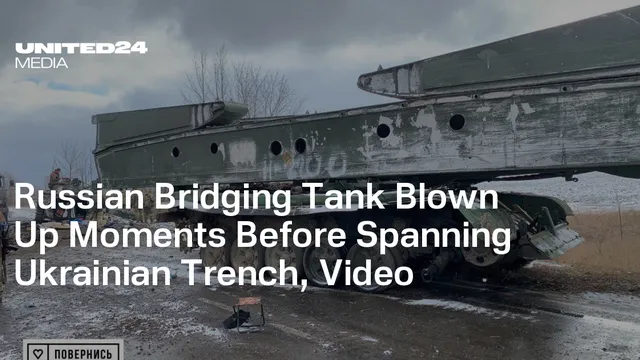
Ukraine's drone strike eliminates Russian bridge-layer vehicle
2025-06-23 17:37- Ukrainian forces destroyed a Russian MTU-72 bridge-layer vehicle with a drone strike, preventing it from deploying a mobile bridge.
- The MTU-72 was used by Russia to breach Ukrainian defenses but lacked frontline combat capabilities, making it a prime target.
- This operation illustrates Ukraine's effective use of drone technology to disrupt Russian advances and highlights the changing dynamics of modern warfare.
Express your sentiment!
Insights
In a significant operation, Ukraine's 141st Mechanized Brigade successfully neutralized a Russian bridge-layer vehicle, the MTU-72, which was attempting to breach Ukrainian defenses. This incident occurred as the vehicle approached a Ukrainian trench line, aiming to deploy a mobile bridge for vehicles to cross a defensive anti-tank ditch. The brigade utilized a precision FPV drone strike to hit the vehicle, resulting in its immediate destruction. The effective use of drone technology showcased a strategic advantage in modern warfare. By targeting such equipment, Ukraine not only thwarts Russian advances but also hampers their overall operational capabilities. The MTU-72 bridge-layer, developed in the 1970s, is based on the chassis of the T-72 main battle tank and is specifically designed to deploy a 20-meter-long bridge quickly. This versatility allows for the crossing of various obstacles but indicates its primary use is logistical rather than direct combat. While it offers some armor protection, it is still vulnerable, especially when exposed to advanced drone strikes. The recent engagement highlights a growing trend in the conflict, emphasizing the role of drones in modern combat scenarios. In previous encounters, Ukraine’s forces have successfully targeted other Russian equipment. For example, the 66th Mechanized Brigade recently destroyed a rare Russian KRVD road deployment system, highlighting the changing dynamics on the battlefield. These strategic eliminations not only disrupt supply lines and mobility for Russian troops but also demonstrate the effectiveness of Ukraine’s military tactics. Enhanced drone capabilities further undercut Russian operational tempo, thereby providing a crucial edge in ongoing hostilities. The implications of such military operations extend beyond immediate tactical victories. They emphasize the importance of control over battlefield dynamics and the potential for technological advancements to consistently alter engagement strategies. The operational success of Ukraine’s armed forces in employing drone technology is indicative of a broader shift in military paradigms and signifies the critical need for effective countermeasures against vulnerable support vehicles during combat. As the conflict continues to evolve, the role of drones may become even more prominent, shaping future engagements between the two nations.